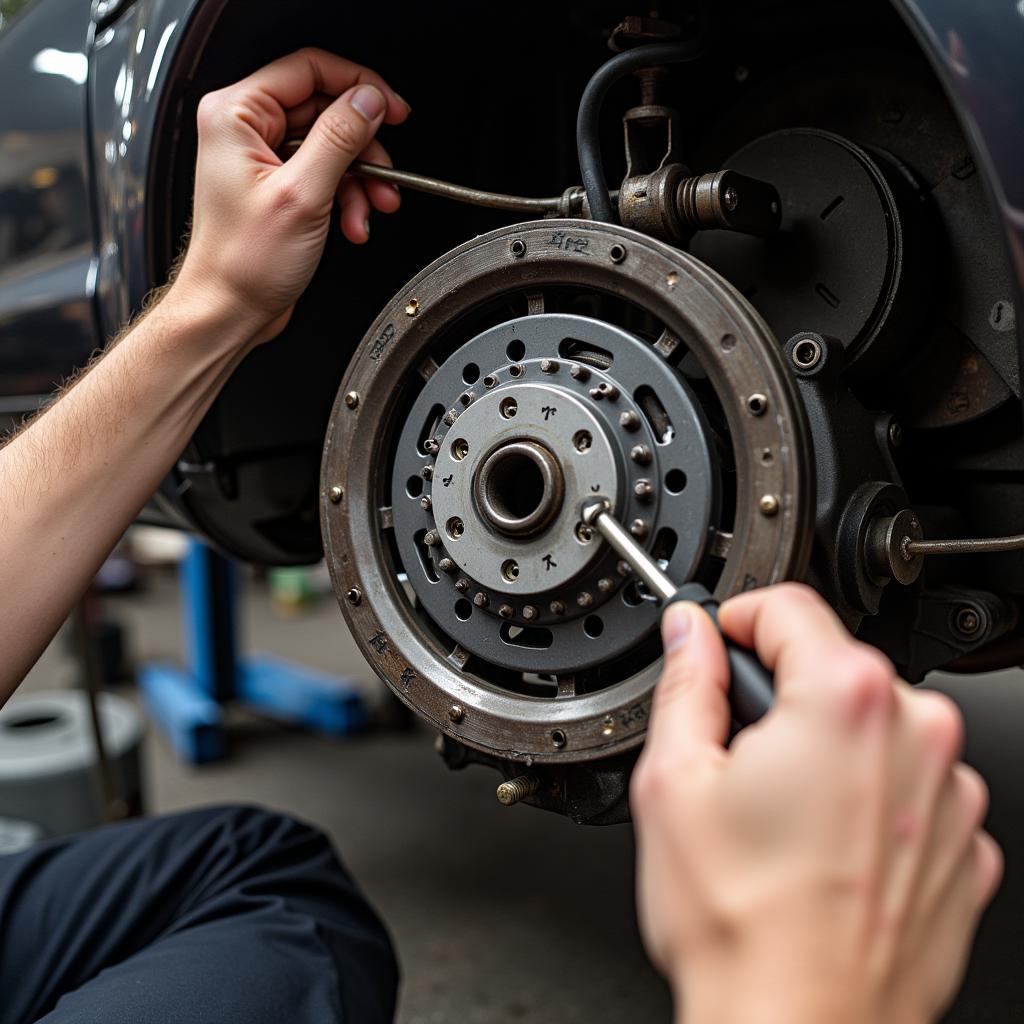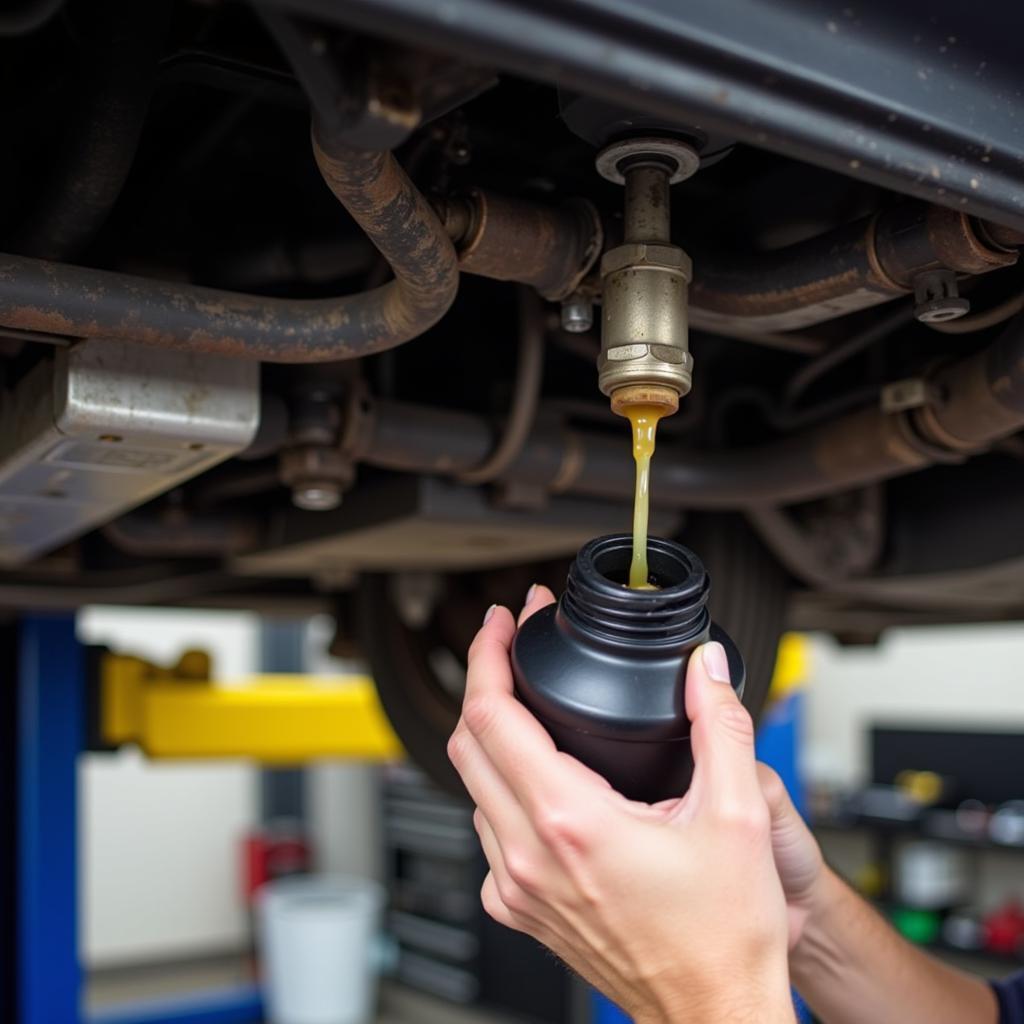Maintaining a stick shift car offers a unique driving experience, but it also requires specialized care. This guide provides a detailed approach to Stick Shift Car Maintenance, ensuring your vehicle stays in top condition and delivers optimal performance for years to come.
Understanding the specific needs of your manual transmission is key to preserving its longevity. Regular checks and timely maintenance can prevent costly repairs down the line. This comprehensive guide covers everything from basic checks to more advanced maintenance procedures. Similar to normal car maintenance schedule, stick shift maintenance has its own rhythm.
Essential Stick Shift Car Maintenance Tasks
Several key maintenance tasks are crucial for the health of your stick shift. Neglecting these can lead to premature wear and tear, impacting the overall driving experience.
- Clutch Care: The clutch is the heart of your manual transmission. Regular checks for wear and tear, including the clutch pedal, master cylinder, and slave cylinder, are crucial. Listen for unusual noises, such as grinding or squeaking, which can indicate potential problems.
- Transmission Fluid Changes: Regularly changing the transmission fluid ensures smooth gear changes and prevents damage to internal components. Check your owner’s manual for the recommended fluid type and change intervals. Don’t assume it’s the same as automatic transmission fluid!
- Shift Linkage Adjustments: A properly adjusted shift linkage allows for precise and effortless gear changes. If you experience difficulty shifting or grinding gears, it’s time to have the linkage inspected and adjusted.
 Stick Shift Clutch Inspection – A mechanic inspects the clutch components of a manual transmission car.
Stick Shift Clutch Inspection – A mechanic inspects the clutch components of a manual transmission car.
Why is Regular Stick Shift Maintenance Important?
Regular maintenance is vital for the longevity and performance of your stick shift car. It helps prevent costly repairs, ensures smooth gear changes, and enhances the overall driving experience. Proper maintenance also contributes to fuel efficiency and can increase the resale value of your vehicle. What’s more satisfying than a perfectly timed downshift?
- Preventing Expensive Repairs: Addressing minor issues early on can prevent them from escalating into major problems that require expensive repairs. Regular inspections can identify potential problems before they become significant.
- Improving Fuel Economy: A well-maintained manual transmission operates more efficiently, contributing to better fuel economy. This saves you money at the pump and reduces your carbon footprint.
- Enhancing Resale Value: A car with a well-documented maintenance history is more attractive to potential buyers, increasing its resale value. This shows that the vehicle has been cared for properly.
 Stick Shift Transmission Fluid Change – A technician drains the old transmission fluid from a manual transmission car.
Stick Shift Transmission Fluid Change – A technician drains the old transmission fluid from a manual transmission car.
How Often Should I Service My Stick Shift?
The frequency of stick shift maintenance depends on several factors, including driving habits, vehicle age, and manufacturer recommendations. Consult your owner’s manual for the recommended service intervals. For many vehicles, it’s advised to have the transmission fluid checked every 30,000 miles and changed every 60,000 to 100,000 miles. The clutch should be inspected during regular maintenance checks. This is similar to aa basic car maintenance.
- Severe Driving Conditions: If you frequently drive in stop-and-go traffic, tow heavy loads, or drive in extreme temperatures, you may need to service your stick shift more often.
- Age of the Vehicle: Older vehicles may require more frequent maintenance due to normal wear and tear.
- Manufacturer Recommendations: Always refer to your owner’s manual for the manufacturer’s specific recommendations regarding maintenance intervals.
Common Stick Shift Problems and Solutions
Stick shift cars, like any other vehicle, can experience problems. Understanding these common issues and their solutions can help you address them promptly and effectively. For understanding y car’s maintenance schedule doesn’t include transmission fluid change, consult your mechanic.
- Grinding Gears: This could indicate a problem with the clutch, synchronizers, or shift linkage. A qualified mechanic should diagnose and address the issue.
- Difficulty Shifting: This can be caused by a low transmission fluid level, a worn clutch, or a problem with the shift linkage.
- Clutch Slipping: A slipping clutch can be caused by a worn clutch disc, pressure plate, or release bearing. Replacing the clutch is typically the solution.
Expert Insights on Stick Shift Maintenance
“Regular maintenance is the key to a long and happy life for your manual transmission,” says John Smith, a certified automotive technician with over 20 years of experience. “Don’t underestimate the importance of regular fluid changes and clutch inspections.”
“A well-maintained stick shift offers a driving experience that automatics just can’t replicate,” adds Jane Doe, a seasoned mechanic specializing in manual transmissions. “It’s worth the extra effort to keep it in top shape.”
This aligns with car maintenance how to guidelines.
In conclusion, stick shift car maintenance is essential for optimal performance and longevity. By following the guidelines outlined in this comprehensive guide, you can ensure your manual transmission provides years of smooth and enjoyable driving. For further assistance or personalized advice, please contact AutoTipPro at +1 (641) 206-8880 or visit our office at 500 N St Mary’s St, San Antonio, TX 78205, United States.




Leave a Reply